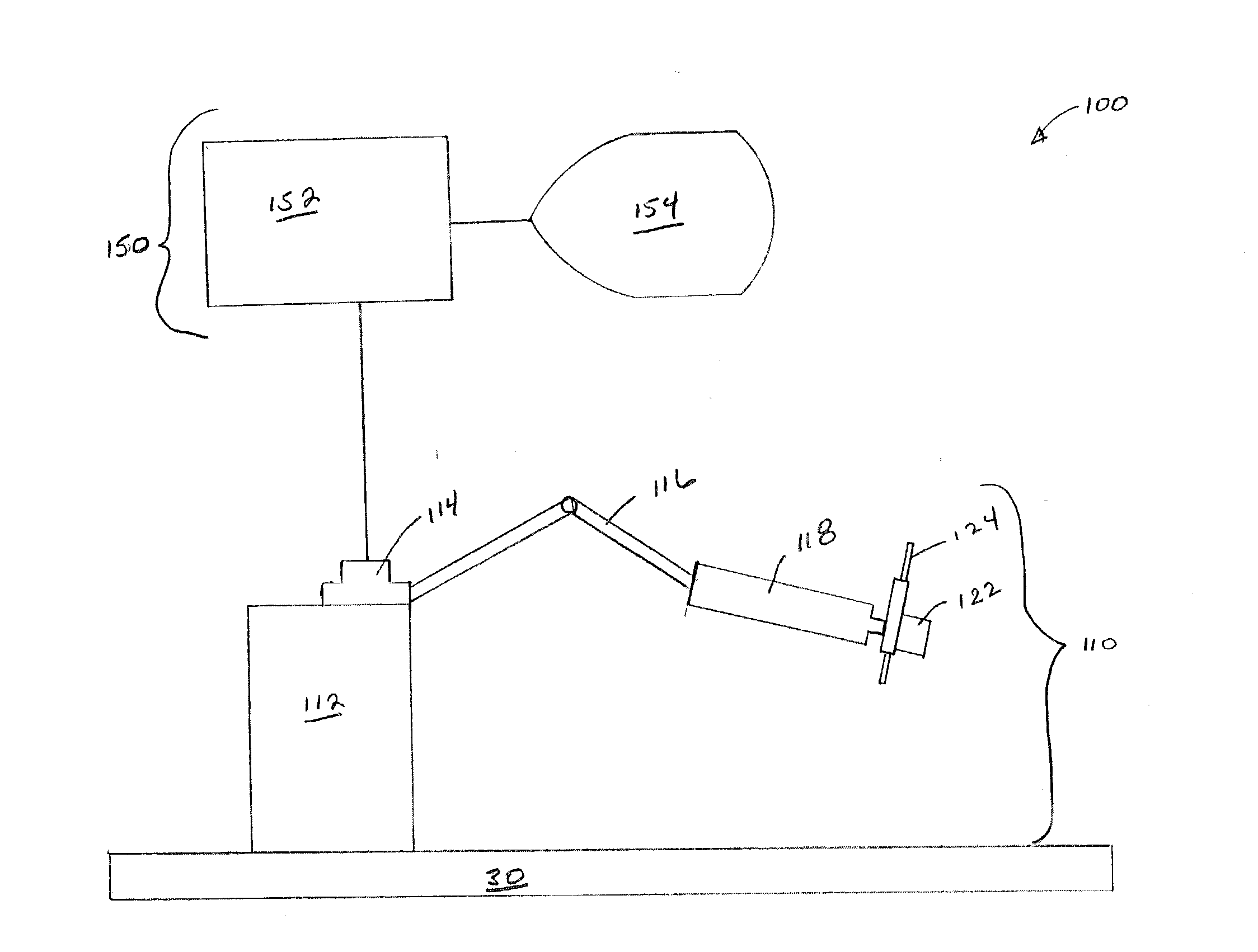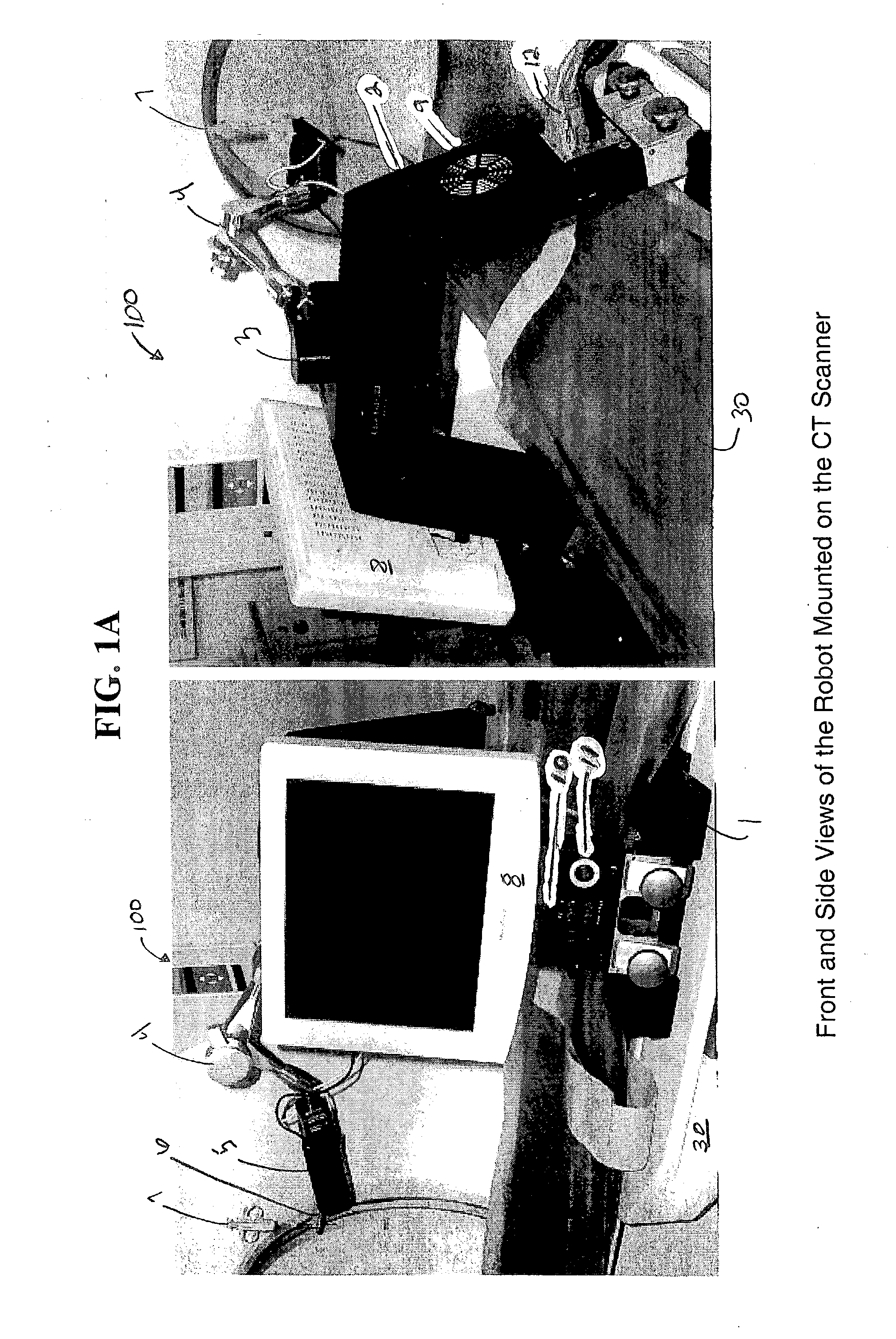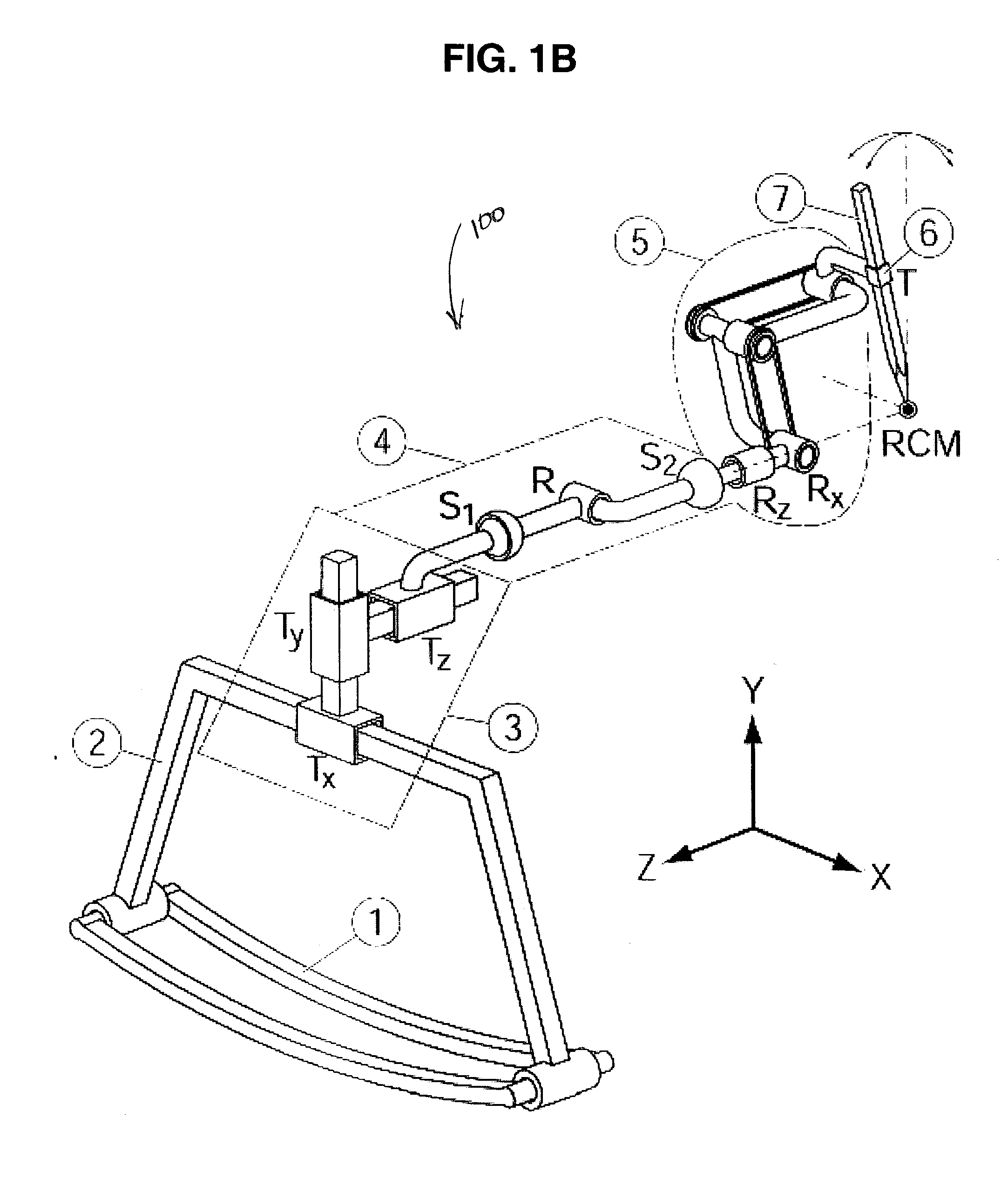Robot for computed tomography interventions
- Summary
- Abstract
- Description
- Claims
- Application Information
AI Technical Summary
Benefits of technology
Problems solved by technology
Method used
Image
Examples
Embodiment Construction
Description of the Robot
[0040]The preferred embodiment of the present invention uses PAKY and RCM robotic modules assembled in a CT-specific configuration and will undergo clinical trials at Georgetown University Medical Center [Cleary K, Stoianovici D, Watson V, Cody R, Hum B, and Lindisch D: “Robotics for percutaneous spinal procedures: initial report,” Computer Assisted Radiology and Surgery (CARS) 2000, Elsevier, 128-33]. One component of the preferred system is the PAKY-RCM robot developed at the URobotics Laboratory at Johns Hopkins. This robot includes the PAKY needle driver (Percutaneous Access of the Kidney) and the RCM (Remote Center of Motion) robot [Stoianovici, D., Witcomb, L. L., Anderson, J. H., Taylor, R. H., Kavoussi, L. R.: “A Modular Surgical Robotic System for Image Guided Percutaneous Procedures”, 1998 MICCAI, Lecture Notes in Computer Science, Springer-Verlag, Vol. 1496, pp. 404-410, 1998].
[0041]FIGS. 1A and 1B illustrate the current preferred embodiment of the...
PUM
 Login to View More
Login to View More Abstract
Description
Claims
Application Information
 Login to View More
Login to View More - R&D
- Intellectual Property
- Life Sciences
- Materials
- Tech Scout
- Unparalleled Data Quality
- Higher Quality Content
- 60% Fewer Hallucinations
Browse by: Latest US Patents, China's latest patents, Technical Efficacy Thesaurus, Application Domain, Technology Topic, Popular Technical Reports.
© 2025 PatSnap. All rights reserved.Legal|Privacy policy|Modern Slavery Act Transparency Statement|Sitemap|About US| Contact US: help@patsnap.com



